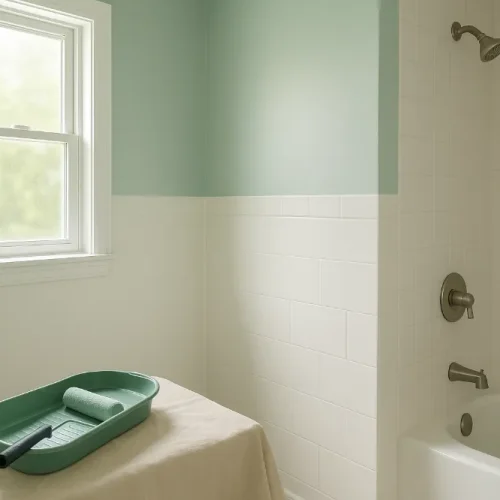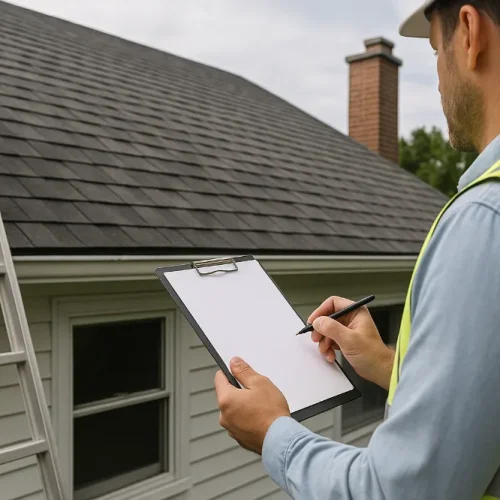
Renovating an older home or commercial space can be exciting, especially when you have the chance to refresh surfaces with new paint. However, many properties built before the 1990s may contain asbestos in textured ceilings, insulation, plaster, and other materials. If these materials are disturbed during renovation, microscopic asbestos fibers can become airborne and pose serious health risks. To achieve beautiful, long-lasting paint results and maintain a safe environment, proper asbestos removal must happen before any painting project begins.
Understanding Asbestos in Older Properties
Many construction materials once relied on asbestos for strength, fire resistance, and durability. Today, these same materials can become hazardous if disturbed. Common areas where asbestos may be found include:
- Textured or popcorn ceilings
- Drywall compound
- Old plaster walls
- Vinyl floor tiles and adhesives
- Pipe and duct insulation
- Ceiling tiles
Asbestos is dangerous only when its fibers become airborne. Activities such as sanding, scraping, cutting, or preparing surfaces for paint can release these fibers. This makes identification and safe removal essential before any interior painting begins.
Why Proper Asbestos Removal Is Essential Before Painting
Removing asbestos is not just a safety measure. It is also a crucial preparation step for quality painting outcomes. Asbestos-containing surfaces often have compromised texture, unevenness, or old coatings that prevent paint from adhering well. If these materials are simply painted over, the finish may peel, bubble, or fail prematurely.
Eliminating asbestos removes the health risks and allows painters to work on clean, stable, and smooth surfaces. The result is better adhesion, richer color, and longer-lasting finishes. By starting with a safe foundation, homeowners protect both their indoor air quality and their renovation investment.
The Importance of Professional Asbestos Removal
Professional asbestos removal is critical because handling asbestos without proper training is extremely dangerous and, in many regions, prohibited by law. Certified abatement contractors follow a detailed process that includes inspection, sample testing, controlled containment, safe removal, and final air quality clearance. Their goal is to ensure fibers are fully contained and eliminated in accordance with safety regulations.
Trained specialists also understand how to minimize damage to walls, ceilings, and other surfaces during removal. This leaves the area ready for repairs and provides a cleaner base for future paint work. If you need reliable help with asbestos or pre-renovation demolition, you can contact Winnipeg Demolition for Demolition and Asbestos Removal Contractors. Their professional expertise helps ensure your renovation begins on a safe and compliant footing.
Preparing Surfaces After Asbestos Abatement
Once asbestos has been safely removed, the space may require some surface restoration before painting. Depending on the method used, certain areas may need patching or resurfacing. Abatement can expose underlying issues such as cracks, damaged drywall, or uneven textures that must be corrected.
This preparation phase often includes repairing drywall, smoothing ceilings, or installing new materials where needed. Completing these tasks ensures that paint will go on evenly and maintain its appearance over time. Proper prep work is one of the most important steps in achieving a flawless and durable finish.
Interior Painting After Safe Asbestos Removal
With a clean, asbestos-free foundation, the interior painting process becomes significantly more effective. Freshly prepared surfaces allow primers and paint to adhere better, resulting in smoother application, vibrant color, and superior durability. Homeowners can also take this opportunity to improve indoor air quality by choosing low-VOC or eco-friendly paints.
If you are ready to move forward with high-quality painting after your asbestos abatement, you can visit Pristine Painting & Decorating for Calgary Painters. Skilled painters can help bring your updated space to life with techniques and finishes that complement your newly safe and refreshed interior.
Recommended steps at this stage include priming repaired surfaces, selecting the right paint for each room, and applying multiple thin coats for even coverage. Thoughtful finishing touches can enhance the visual impact and contribute to a healthier and more appealing indoor environment.
Long-Term Benefits of Coordinating Asbestos Removal and Painting
Taking the time to coordinate asbestos removal and interior painting offers long-term advantages. Indoor spaces become safer for occupants, which is especially important for households with children, older adults, or individuals with respiratory sensitivities. High-quality paint applied over a well-prepared surface lasts longer, reducing future maintenance costs. Additionally, homes and commercial properties often gain value when they undergo safe and properly executed upgrades.
Final Recommendations
Before starting any interior painting project, homeowners should prioritize asbestos inspections and removal when necessary. Certified abatement contractors and experienced painters play essential roles in creating a safe, attractive, and long-lasting result. By approaching renovations in the right sequence and relying on trained professionals, you can protect your health and enjoy a beautifully refreshed space that will stand the test of time.
FAQs
Asbestos fibers can become airborne during sanding or surface prep. Removing asbestos first ensures safety and allows paint to properly adhere to clean, stable surfaces.
Homes built before the 1990s often contain asbestos in ceilings, insulation, drywall compound, and flooring. A certified asbestos inspector can test materials to confirm.
No. Painting over asbestos doesn’t eliminate the risk. Any future damage, cracking, or sanding could release hazardous fibers.
Only trained and certified asbestos abatement professionals are legally permitted to remove and dispose of asbestos safely.
The process includes inspection, sample testing, containment setup, controlled removal, HEPA filtration, cleanup, and final air clearance testing.
Some surface disruption is normal. After removal, areas may require patching, resurfacing, or drywall repair before painting.
Painters can begin once clearance tests confirm safe air quality and any surface repairs are complete.
Asbestos removal eliminates brittle or uneven surfaces, helping paint adhere better and last longer without peeling or bubbling.
Yes. Most regions have strict laws for handling, removing, transporting, and disposing of asbestos to protect public health.
Yes. A home free from asbestos risks is safer, more appealing to buyers, and often maintains higher value after renovation.













